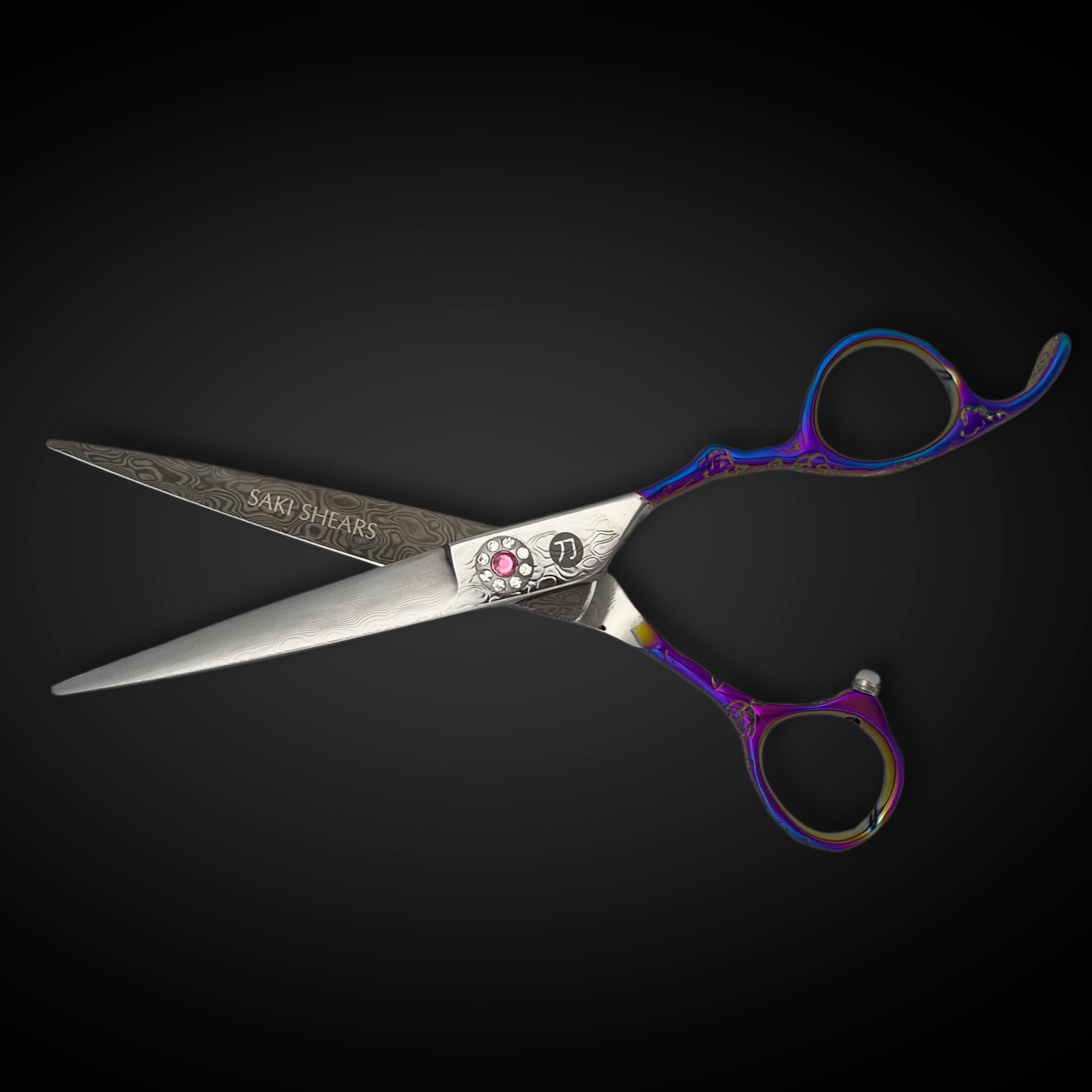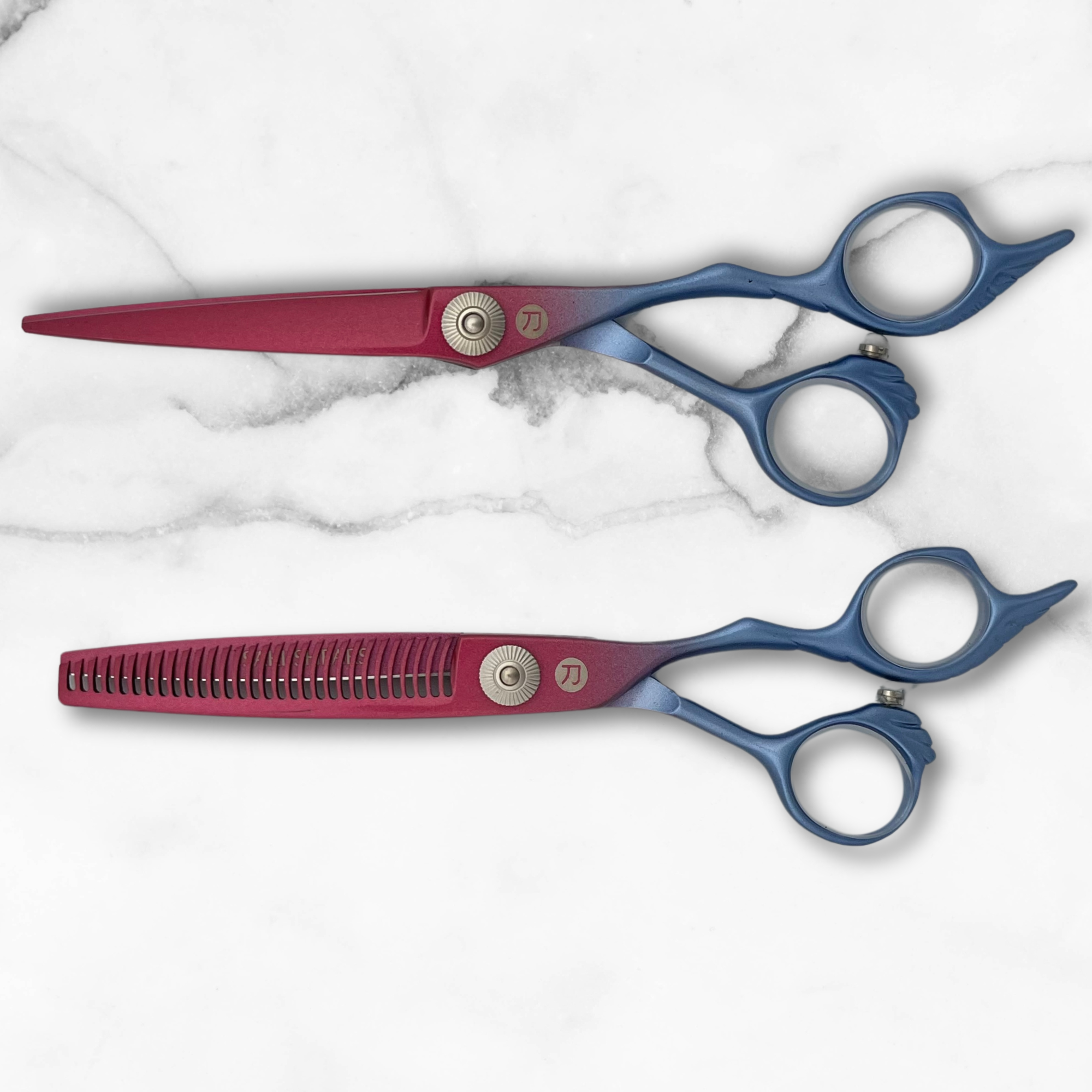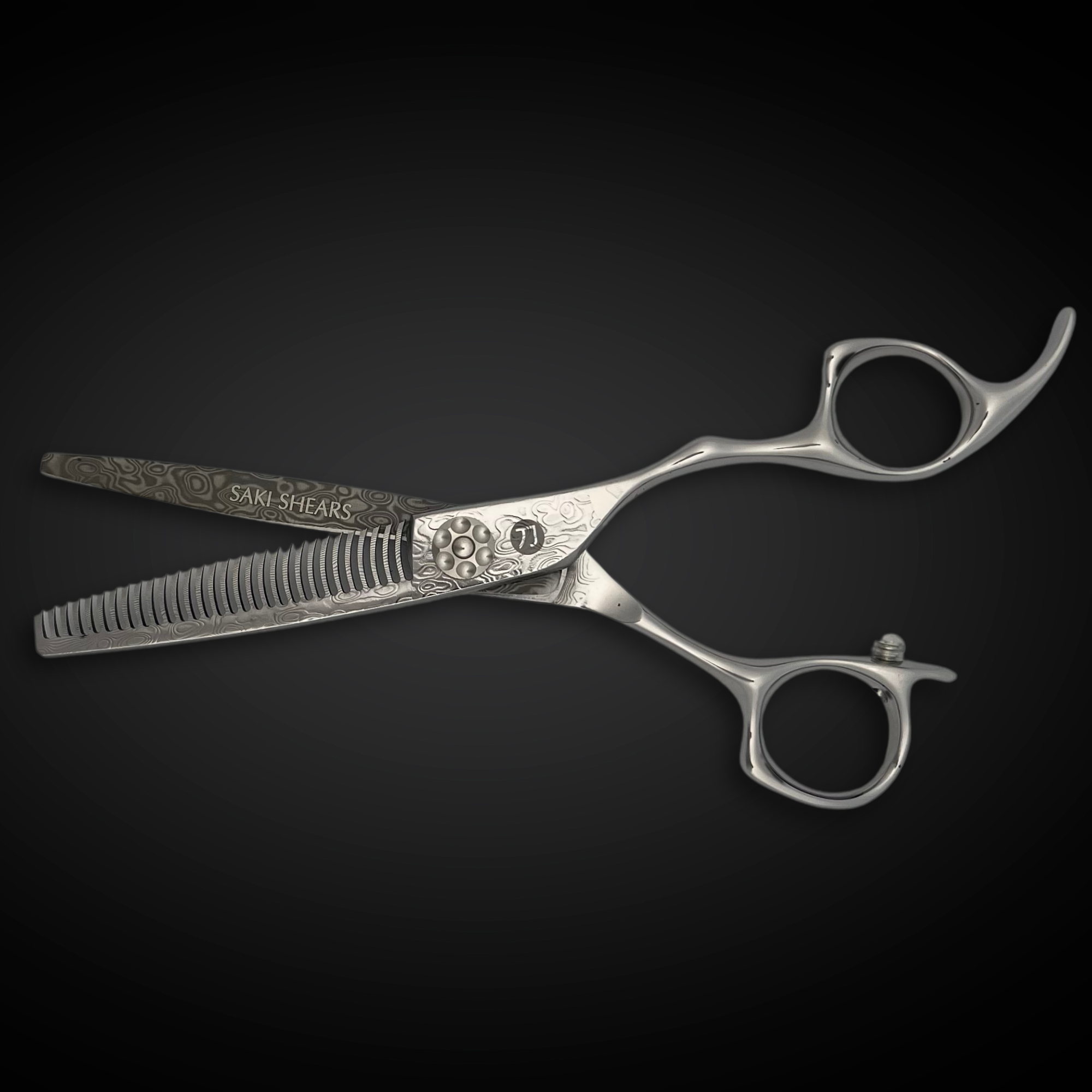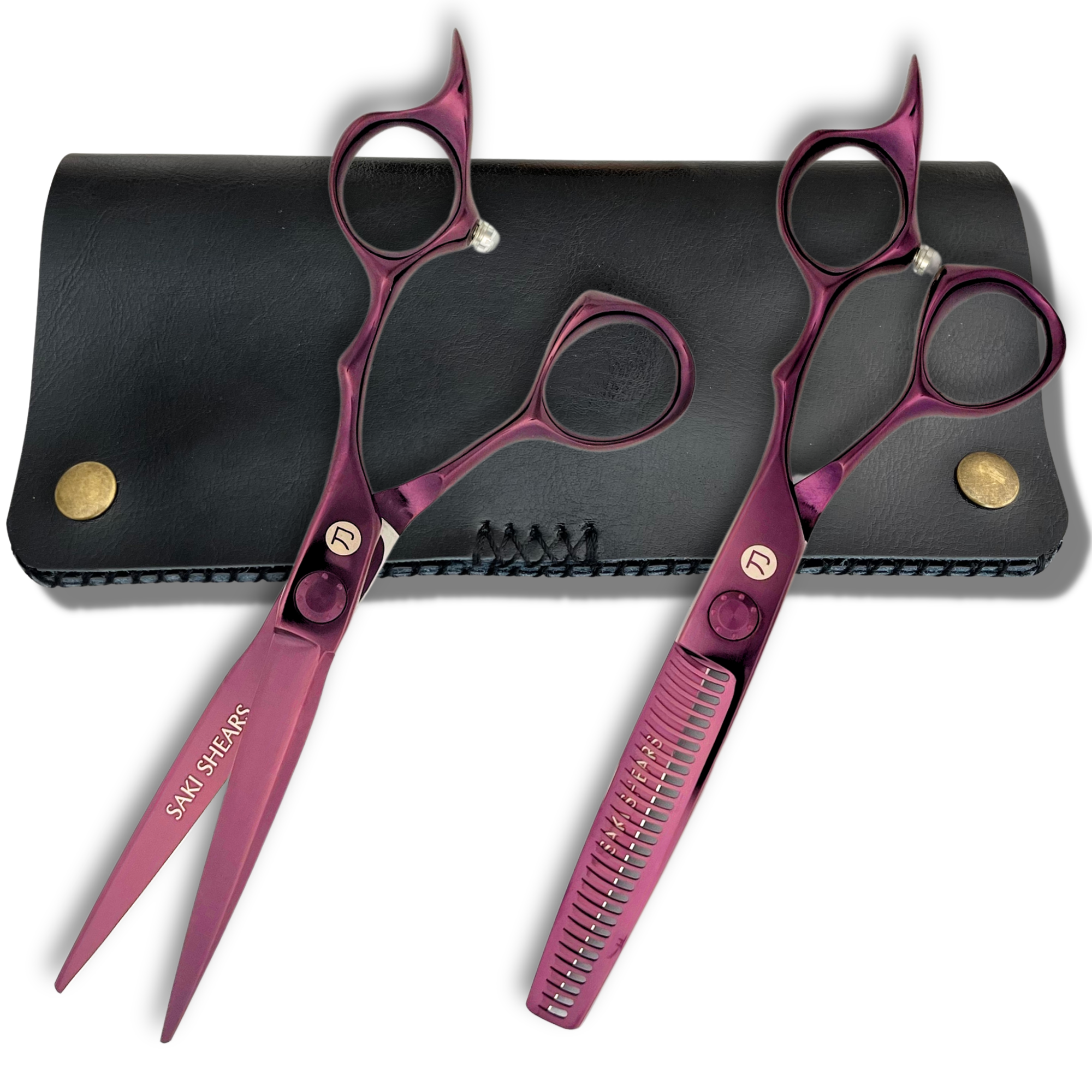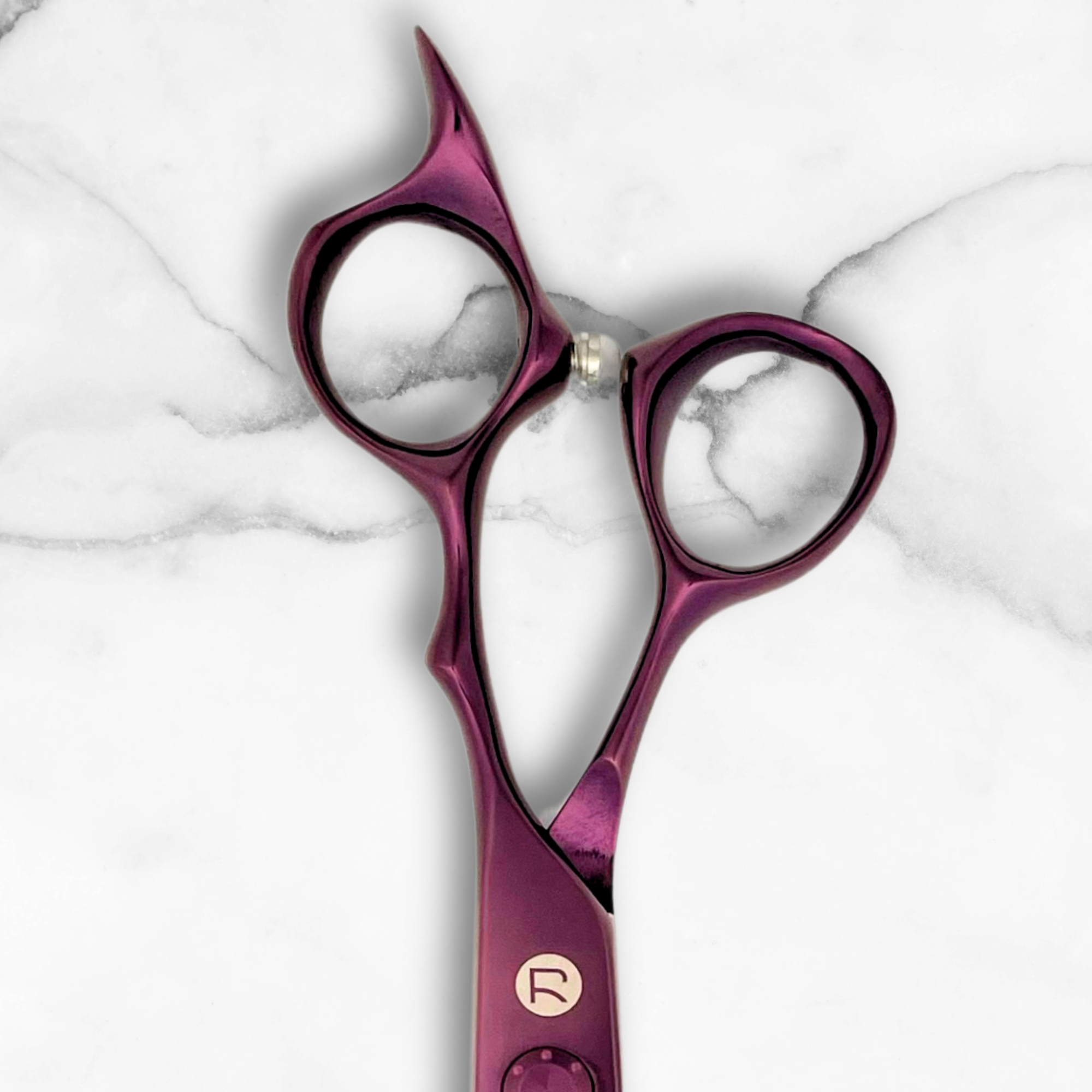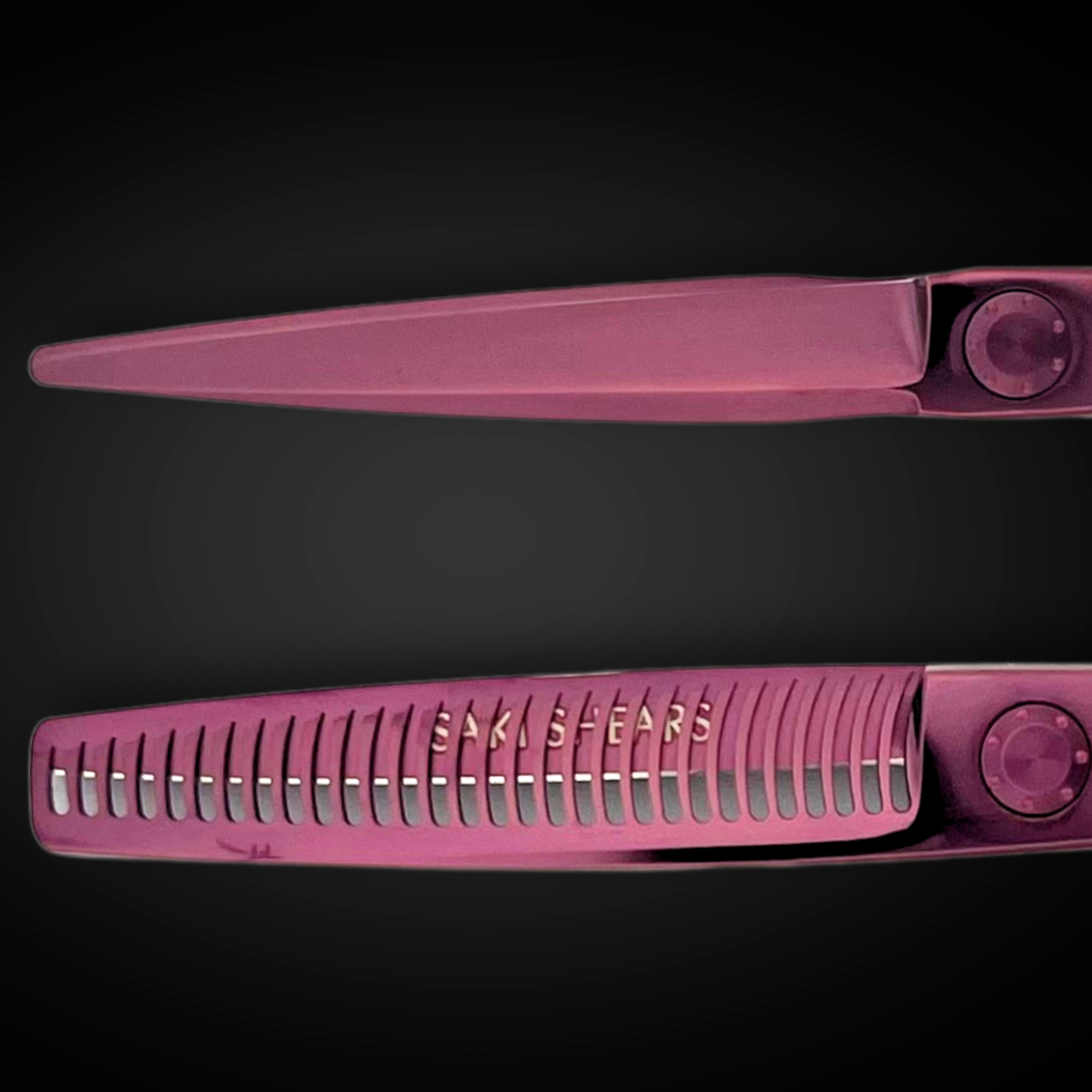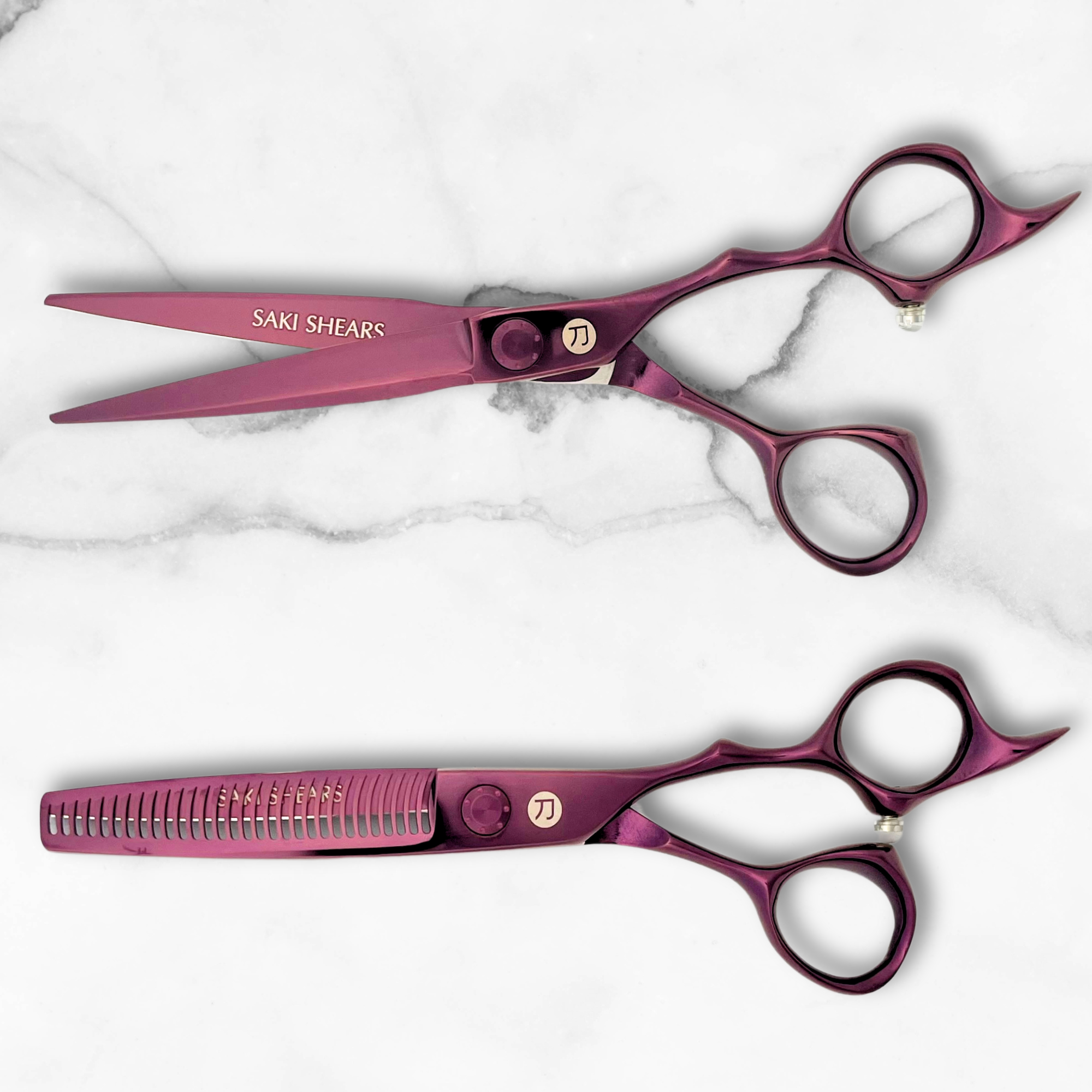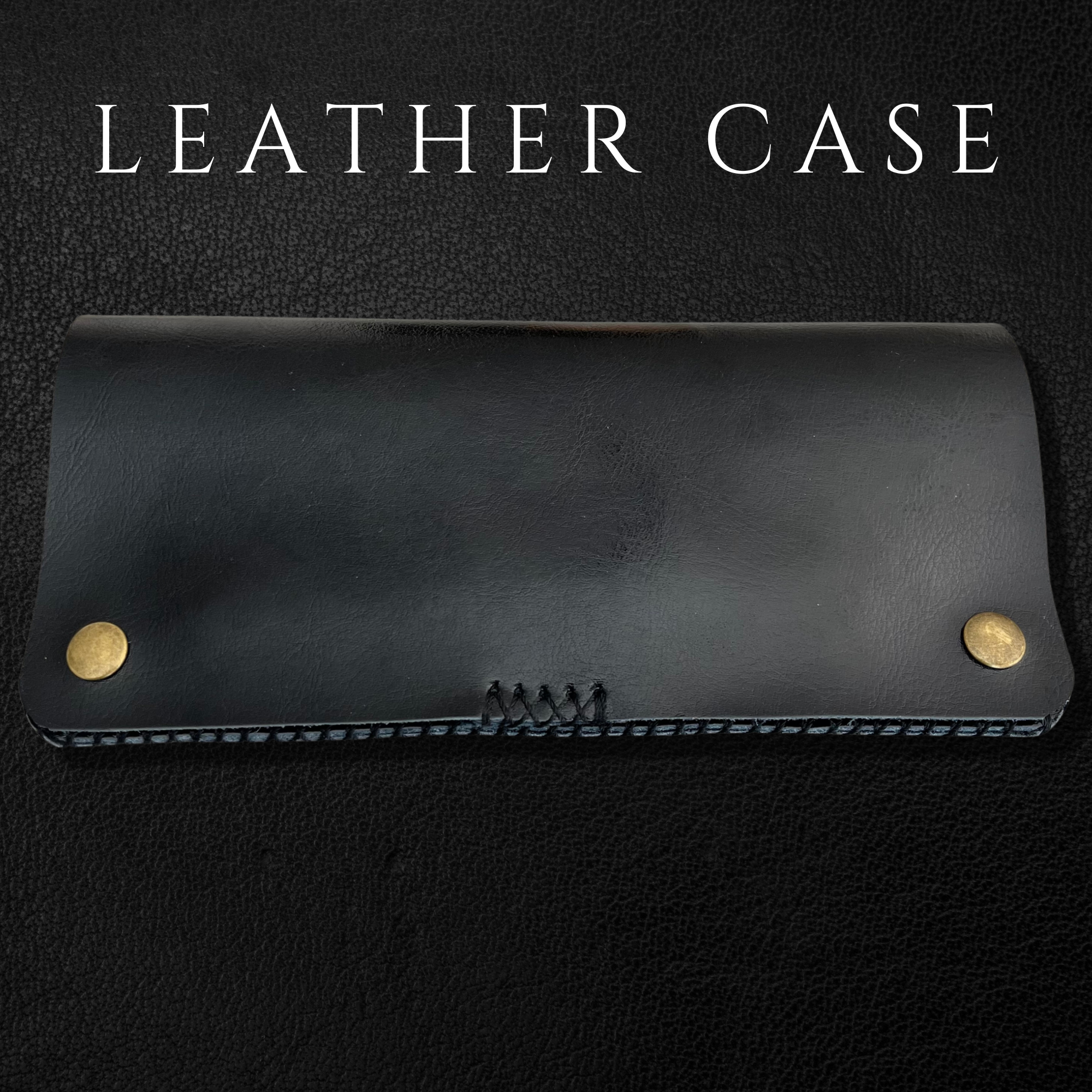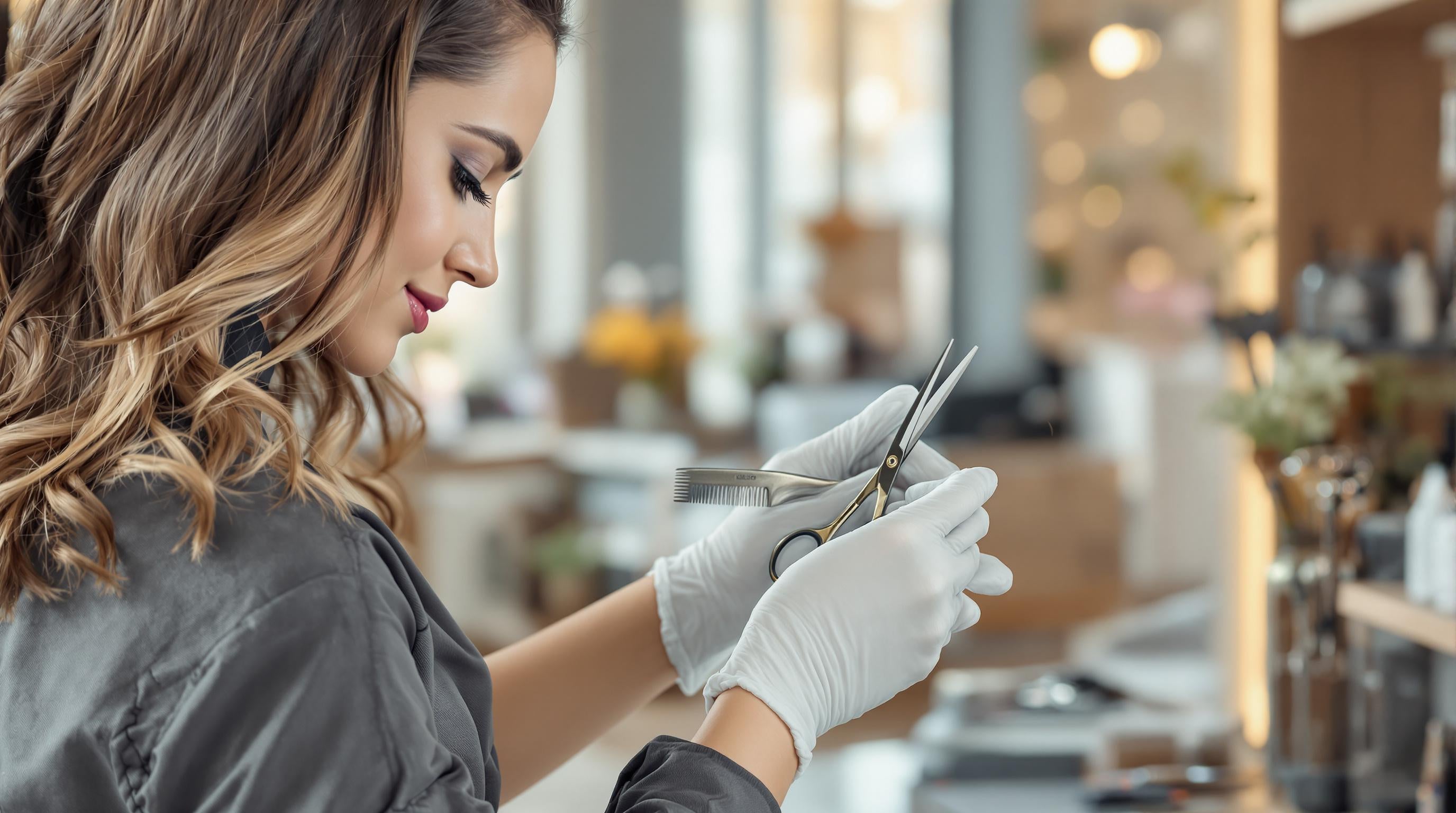Japanese vs German Steel: Hair Shear Comparison Guide
Japanese and German steel shears are top choices for hairstylists, but they excel in different areas. Here's a quick breakdown:
- Japanese Steel Shears: Known for precision, ultra-sharp convex blades, and lightweight design. Perfect for detailed techniques like point cutting and texturizing, but require regular care. Higher price range ($200-$600+).
- German Steel Shears: Focused on durability, with sturdy bevel-edge blades that handle heavy daily use. Ideal for dry cutting and bulk removal, with easier maintenance. More affordable ($100-$300).
Quick Comparison
| Feature | Japanese Steel Shears | German Steel Shears |
|---|---|---|
| Blade Design | Convex edge for precision | Bevel edge for durability |
| Best Use | Slide, point cutting, texturizing | Dry cutting, bulk removal |
| Maintenance | Needs regular care | Easier to maintain |
| Price Range | $200-$600+ | $100-$300 |
Choose Japanese shears for precision and intricate work, or German shears for durability and versatility. Your decision depends on your cutting style and salon needs.
Differences in Craftsmanship and Blade Design
Japanese Steel: Precision and Traditional Forging
Japanese shears, made from high-quality 440C steel, are forged using time-honored techniques that deliver exceptional hardness and edge retention. This careful process ensures the blades stay sharp for an extended period.
The convex edge design of Japanese shears provides a smooth cutting surface, allowing for effortless slicing through hair. This minimizes resistance, reduces split ends, and results in cleaner cuts. Convex edges are especially effective for techniques like slide and point cutting, making them a go-to choice for stylists who focus on detailed, intricate work.
"Japanese 440C steel reflects a culture of craftsmanship and innovation." - Sakishears.com, 2023 [2]
German Steel: Strength and Everyday Functionality
German shears, crafted with modern manufacturing methods, are known for their durable bevel-edge designs. These are built for consistent performance and affordability, making them ideal for daily use.
The bevel-edge design creates a sturdy cutting edge that withstands frequent use. While it requires more force during cutting, this design is perfect for tasks like dry cutting and tapering. Its durability makes German shears a practical choice for busy salons where tools face heavy use.
The differences in blade design show how each type of steel caters to specific hairstyling demands, as outlined below:
| Blade Design Feature | Japanese Convex Edge | German Bevel Edge |
|---|---|---|
| Cutting Performance | Ideal for slide and wet cutting | Best for dry and taper cutting |
| Maintenance | Needs regular care and honing | Easier to maintain, more forgiving |
| Edge Retention | Excellent with proper care | Durable and long-lasting |
These distinctions make each type of shear better suited to different hairstyling techniques and environments [3].
Why Top Hair Stylists Pay $2000 For Japanese Hair Shears
Performance and Durability of Japanese vs German Steel
The craftsmanship of shears sets the stage, but their performance and durability decide how well they hold up in a busy salon over the long haul.
Edge Retention and Durability
Japanese steel shears are known for their hardness and resistance to corrosion. They’re perfect for detailed cutting techniques and retain their sharpness for a long time if handled with care. However, their ultra-sharp edges can be prone to damage without proper handling.
German steel shears, on the other hand, are built tough. Their bevel-edge design is made to handle heavy daily use and maintain consistent performance, even in demanding environments.
| Performance Aspect | Japanese Steel | German Steel |
|---|---|---|
| Edge Retention | Excellent with proper care | Good, holds steady over time |
| Impact Resistance | Moderate | High |
| Corrosion Resistance | Outstanding | Very Good |
| Cutting Force Needed | Minimal | Moderate |
These differences also affect how much time and effort you’ll need to invest in keeping each type of shear in top condition.
Care and Maintenance Needs
Japanese shears require careful upkeep. Regular cleaning, drying, and honing are essential to preserve their sharp edge. On the flip side, German shears are more forgiving. Basic cleaning and occasional sharpening are usually enough to keep them working well.
While Japanese shears demand more attention, they reward users with long-lasting sharpness. German shears, thanks to their durable bevel edges, are easier to maintain but may wear down faster, eventually needing replacement [3].
sbb-itb-3cc0078
Best Uses for Japanese and German Steel Shears
Japanese and German steel shears each bring unique strengths to hairstyling, making them better suited for specific tasks.
Japanese Steel: Ideal for Precision Work
Japanese steel shears are designed for techniques requiring sharpness and accuracy. They shine in:
- Point Cutting: Their razor-sharp edges deliver clean, precise cuts with ease.
- Slide Cutting: The smooth blades glide effortlessly, ensuring flawless results.
- Texturizing: Perfect for adding fine, detailed texture.
The lightweight build of Japanese steel shears is a bonus for stylists working on intricate cuts over long periods. For instance, Saki Shears offers premium Japanese steel models like the 440C and VG-10, tailored for precision techniques. Prices for these high-performance tools start at $285.00.
While Japanese steel is great for detailed work, German steel dominates when it comes to durability and versatility.
German Steel: Built for Everyday Use
German steel shears are the go-to choice in busy salons, thanks to their sturdy construction and ability to handle a range of tasks. They’re perfect for:
- Standard trims and cuts.
- Dry cutting methods.
- Removing bulk quickly and efficiently.
- Heavy-duty styling.
A great example is Wella Professionals' German steel shears, which are known for their reliable performance and minimal maintenance needs [1]. These shears maintain their cutting ability even with frequent use, making them indispensable for salons focused on high-volume services [3].
| Technique | Japanese Steel | German Steel |
|---|---|---|
| Point Cutting | Extremely sharp and precise | Adequate but less sharp |
| Slide Cutting | Smooth and effortless | Requires more effort |
| Blunt Cutting | Not ideal for bulk removal | Reliable and efficient |
| Maintenance | Needs regular care | Low-maintenance and forgiving |
Each type of steel offers distinct advantages, catering to different hairstyling needs. Understanding these differences helps stylists choose the right tool for the job.
Side-by-Side Comparison of Japanese and German Steel
Here’s a breakdown of the main differences between Japanese and German steel shears, outlining their features and ideal uses.
Comparison Table: Japanese vs German Steel
| Feature | Japanese Steel Shears | German Steel Shears |
|---|---|---|
| Steel Quality | High-grade stainless steel with superior hardness | High-quality chromium steel focused on strength |
| Blade Design | Ultra-sharp convex edges for precise cuts | Beveled edges with serrations for better grip |
| Cutting Performance | Perfect for slide cutting and precision work | Great for dry cutting and bulk removal |
| Weight & Ergonomics | Lightweight with offset handles to reduce fatigue | Heavier with traditional straight handles |
| Edge Retention | Stays sharp longer, less frequent sharpening needed | Durable but requires more frequent maintenance |
| Best Applications | Ideal for point cutting, texturizing, and precision | Suited for daily salon work and standard cuts |
| Price Range | Premium ($200-600+) | Mid-range ($100-300) |
| Maintenance Needs | Requires careful handling and specific care | Easier to maintain, more forgiving |
Japanese 440C steel shears are highly regarded in upscale salons that focus on precision techniques, while German shears, enriched with chromium, are a favorite in busy salons prioritizing durability and versatility [1] [3].
Japanese shears need less frequent sharpening but require careful handling to maintain their edge. On the other hand, German shears may need sharpening more often but are easier to maintain overall [2].
This comparison can help stylists choose the shears that align with their cutting style and salon demands.
Conclusion: Choosing the Best Shears for Your Work
Deciding between Japanese and German steel shears comes down to weighing factors like precision, durability, and comfort. Your specific needs and working environment will guide you toward the right choice.
Japanese steel shears are ideal for precision tasks such as point and texturizing cuts. On the other hand, German steel shears are better suited for high-volume, general salon work. Price points also vary, with Japanese shears typically ranging from $200 to $600+ and German shears from $100 to $300, reflecting their different strengths [3].
Maintenance is another key consideration. Japanese shears don’t need sharpening as often but require careful handling, while German shears are easier to maintain but may need sharpening more frequently [2]. Comfort also matters - Japanese shears often feature lightweight, offset handles to reduce hand fatigue, whereas German shears, with their heavier, straight handles, provide a more traditional grip [1].
When choosing shears, think about:
- Your daily cutting techniques and services
- Budget and maintenance needs
- Comfort during long hours of use
- The expectations of your salon and clientele
The tools you use directly affect the quality of your work and your long-term career. Whether you prioritize the precision of Japanese shears or the versatility of German ones, pick a pair that aligns with your cutting style and offers both immediate functionality and lasting value [1] [3].
FAQs
Are Japanese scissors good?
Japanese scissors are highly regarded in the hairstyling world for their precision and quality. Made from high-grade stainless steel and crafted with traditional forging techniques, these scissors feature ultra-sharp convex edge blades, perfect for detailed cutting tasks like point cutting and texturizing [1]. While they do require proper care to maintain their sharpness, their durability and performance make them a popular choice among professionals [3].
What is the best grade of steel for shears?
Top-tier hair shears are often made from premium steel grades like ATS-314 and VG-10 [2]. These materials are known for their strength, resistance to rust, and ability to maintain a sharp edge, making them ideal for professional use.
| Steel Grade | Key Characteristics |
|---|---|
| ATS-314 | High hardness, excellent edge retention |
| VG-10 | Strong corrosion resistance, long-lasting durability |
Knowing the qualities of these steel types can help stylists choose the right shears to match their cutting style and salon needs [1] [2].

